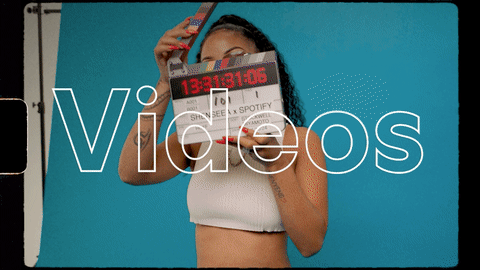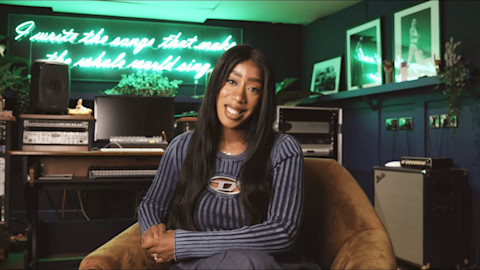On the right side of the blood-red cover of St. Vincent’s 2017 album, Masseduction, a woman in a leopard unisuit and hot pink tights is bent away from the viewer at a nearly 90-degree angle, her thong-sporting butt on full display. That butt belongs to St. Vincent’s friend Carlotta Kohl, and the decision to make her derriere the star image of the album cover was not made lightly. To help make the final call, St. Vincent—whose real name is Annie Clark—consulted Willo Perron, a creative director for the stars who’s famous for crafting the salmon pink-and-black visual identity of JAY Z’s latest album, 4:44, and designing the sets for Drake’s 2018 Aubrey & the Three Migos Tour and Rihanna’s 2016 ANTI World Tour.
Together, Clark and Perron sifted through various options for the cover, including a close-up of Clark’s face, before settling on the now-famous image. Ultimately they felt it best matched the overall absurdist aesthetic Clark was looking to infuse into all of her Masseduction-related assets. “The label will give us some pushback,” Perron predicted, according to a profile of St. Vincent in The New Yorker. “But, honestly, I think it’s great.” So did loads of other folks, and the cover eventually led to Perron receiving his first Grammy nomination and win for Best Recording Package. And meanwhile, Masseduction has become St. Vincent’s most popular album to date, attracting attention from a more mainstream audience.
![St. Vincent Masseduction Album Cover]()
St. Vincent Masseduction Album Cover
Credit Clark’s and Perron’s devotion to branding for this increase in attention. The bright colors from the album’s cover were replicated in Clark’s music videos and wardrobe choices, while Clark herself maintained a consistent, off-kilter character across interviews and press junkets in the months leading up to Masseduction’s release. By applying the aforementioned absurdist aesthetic to every other aspect of the Masseduction experience, Clark was able to leave a lasting impression on listeners that they wouldn’t soon forget.
It’s More Creative Than It Sounds.
The idea of branding may be a turnoff to a right-brained musician, but it’s more than a marketing buzzword. It’s another tool in your creative kit: a way of making sure you are communicating a consistent message to your fans so that they can understand and identify with what you represent. The clearer your brand is, the bigger impression you make. That’s why many labels and bands hire creative directors like Perron to help them conceptualize music videos, album covers, and stage shows in a way that stays on message with their vision.
![Caroline Rose Photo by Matt Hogan]()
Caroline Rose Photo by Matt Hogan
Even if you don’t have a budget to hire someone like Perron, there’s still plenty you can (and should) do to nail down a brand identity at the beginning of your career. “Creating a set of hard lines and rules to follow in the very beginning I think is really important,” says rising indie pop star Caroline Rose. “One of the first things I did after finishing my record was create an aesthetic booklet to give to any sort of collaborators.”
That’s why Rose’s music videos, stage shows, instruments, and clothes all heavily feature the color red. Red is Rose’s thing, and she makes sure everyone who works with her knows it. “The color red is very attractive to the human eye, but when you enter a room and just about everything is red, it really brings out something slightly psychotic. I like that. I enjoy using a basic palette and finding ways to evoke intense feelings and energy from it,” she explains. For Rose, the choice to include red in everything she produces represents an effort in branding and character-building that helps her communicate to the audience in ways that she can’t with her music alone.
“Things like satire, sarcasm, and irony are really hard to express in songs unless it’s to the point of Vaudeville-esque proportions, and that gets dangerous if you don’t want to become a parody of yourself,” she says. And while humor and irony are important aspects of Rose’s identity, her music is meant to be taken seriously. So to communicate the more abstract attributes of her brand, Rose, in addition to coloring her world red, uses opportunities during live performances (she’s well-known among fans for her on-stage banter, which often includes one-liners and quirky anecdotes from her personal life), in interviews, and across social media to come across as a satirical, ironic character that is immediately recognizable.
For any artist on the rise, there’s much to be gained from squaring away your brand early in your career. Not only does doing so allow you to be instantly recognizable from all angles within a crowded field of newcomers, it also stakes your claim to a specific creative territory, sending a clear message to industry execs and collaborators that you’re in control of your aesthetic and sure of who you are as an artist.
—Abigail Covington








